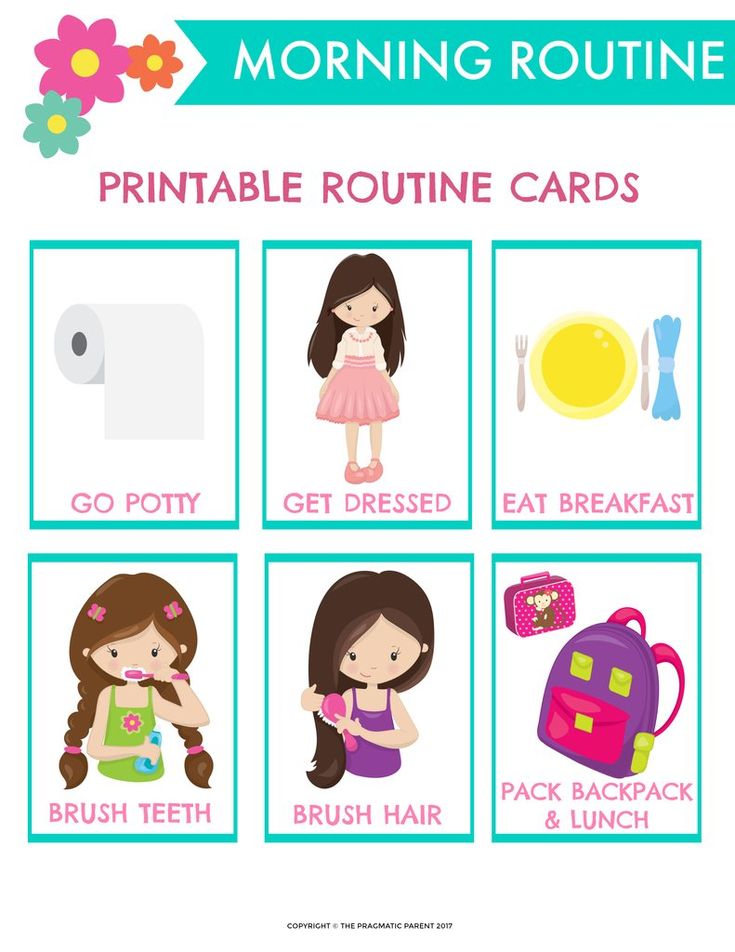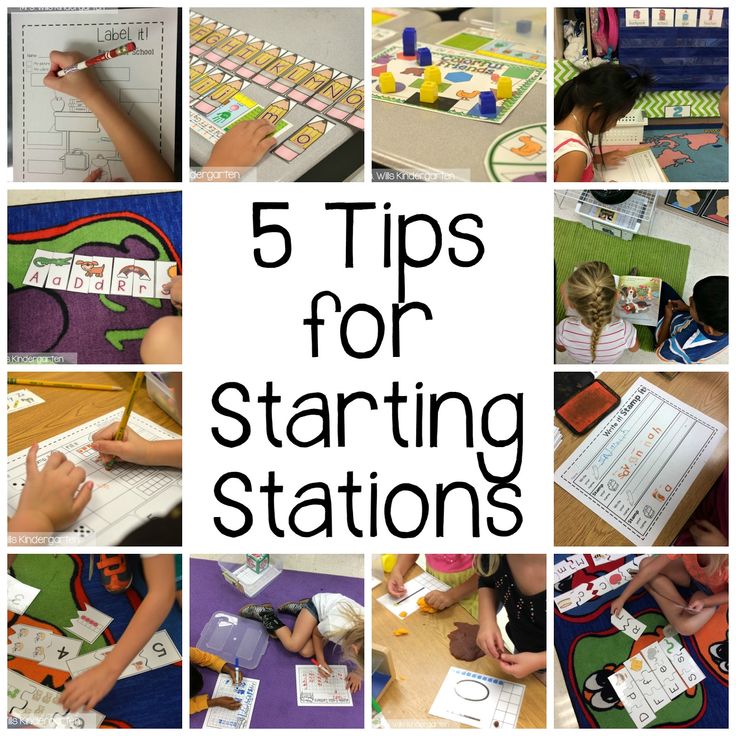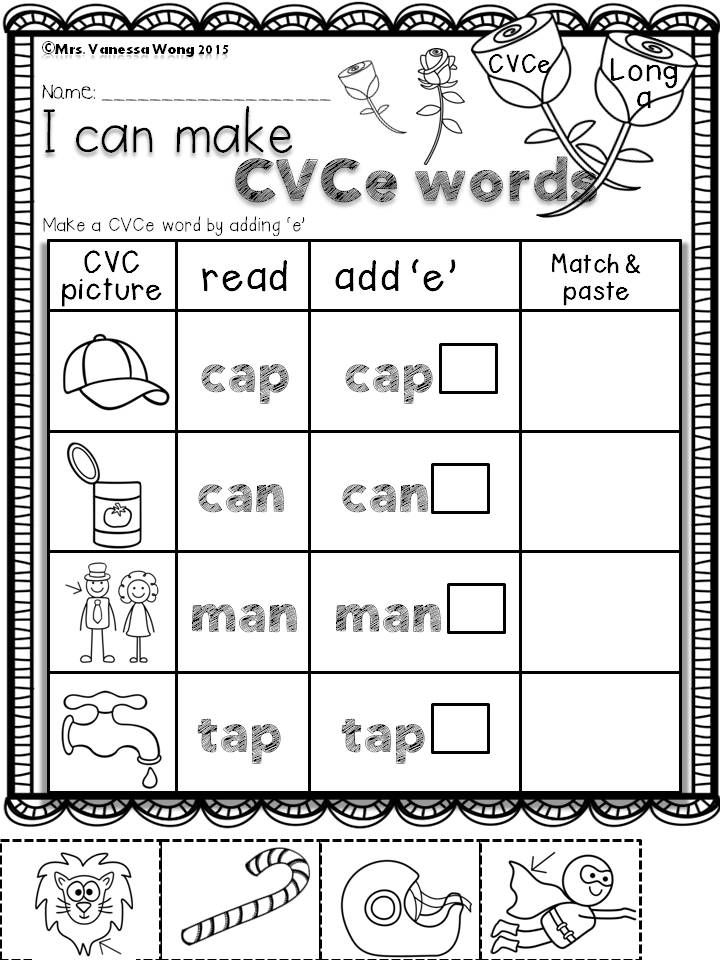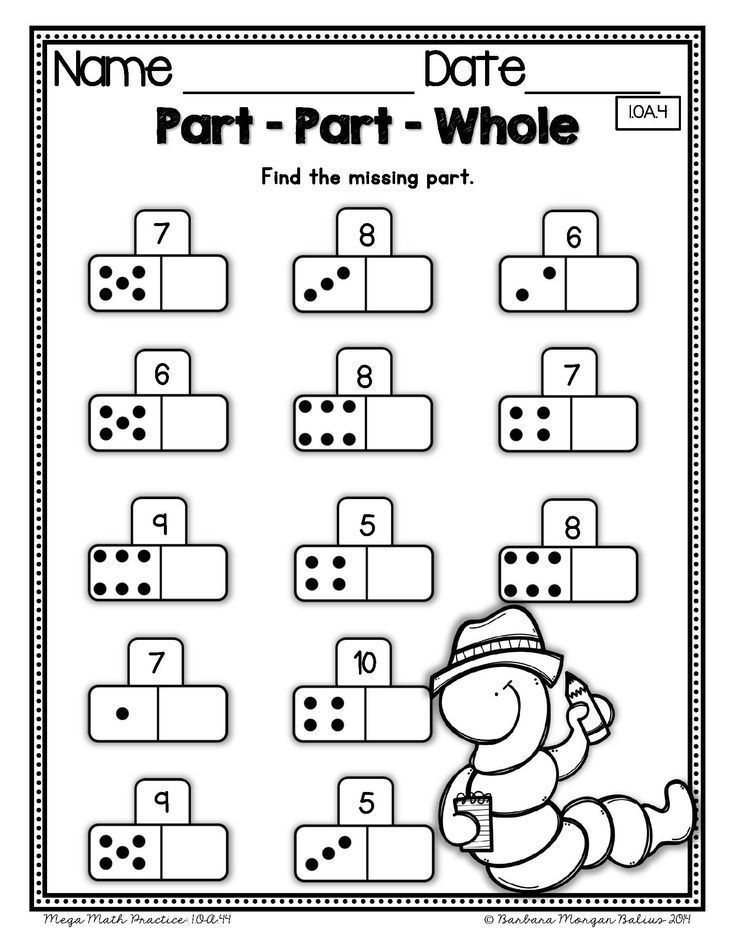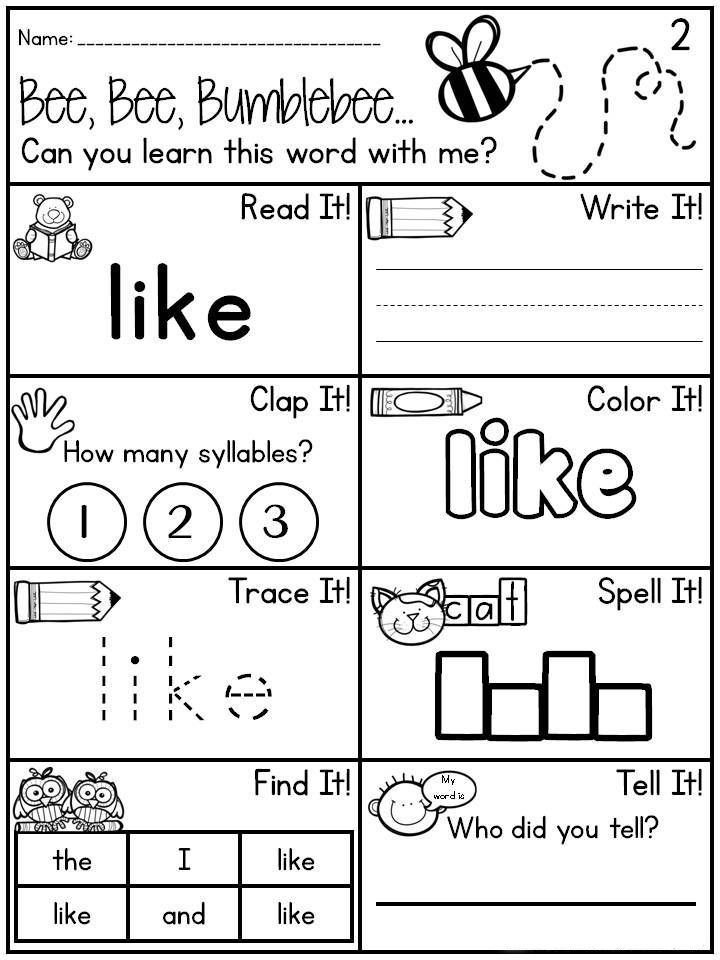Good morning routine for kids
Best Morning Routine Tips and Tricks Your Kids Will Actually Follow
Morning routines for kids can transform the trajectory of your child’s day. My kids are slugs on weekday mornings; on weekends, they are up before the sun rises.
It’s like…they know, which is why routines make such a difference to keep weekday mornings stress-free!
I’ve been doing routines with my kids since they were newborns (yes, even babies pick up on routine!). I’ve written on toddler schedules, daily schedules for kids, toddler bedtime routines, summer schedules, school-age routines and more.
You might even say I’m a routine junkie – which according to science is actually a really good thing.
I can wholeheartedly say morning routines are the greatest gift to a mother’s sanity — on top of being hugely beneficial for the kids.
For morning routines, both my son and daughter can…
- Wake themselves with an alarm clock (If you have a toddler, stick with me! I have a trick for you too!)
- Get out of bed and dress themselves
- Brush their teeth and hair
- Get their own breakfast going most days
- And they can do all this on their own.
..without me nagging, threatening or going Hulk Mom.
When given the right tools and encouragement (more on that in a minute), kids will surprise and impress you with their independence, responsibility and time management skills.
This is not fluff. I am completely serious.
So if you find yourself exhausted each day from having to manage your child’s routine, let me bring you some relief.
How to Create Smooth Morning Routines for Kids
Practicing routines with your kids helps a ton – and what I mean by this is practice the routine on a Saturday or Sunday when it’s not actually time to go through the routine. Practice and make it fun and without pressure. This helps you stay on your child’s side and keeps your child more willing to cooperate.
On This Page…
- Get your child an alarm clock that matches their time-telling ability.
- Have your child pick out their clothes for the whole week on Sunday.
- Use a set of printable daily routine cards.
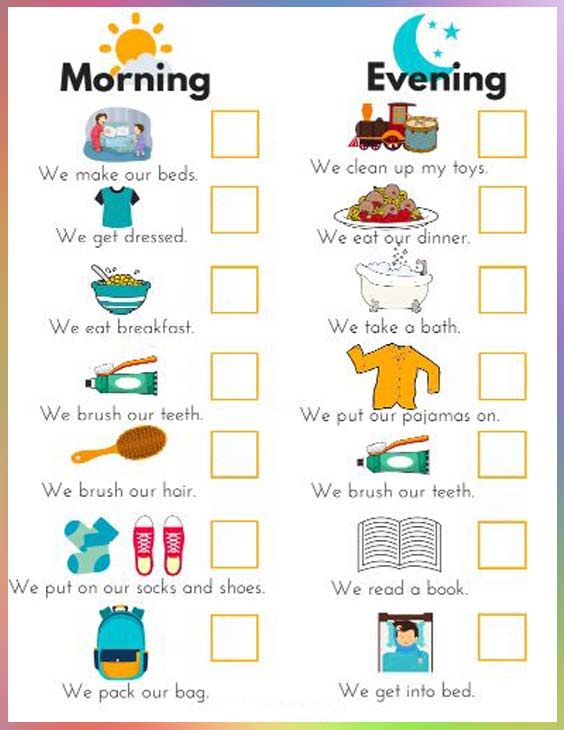
- Fuel your child's brain with the right foods to support focus.
- Basic examples of morning routines with kids.
- Avoid technology at all costs in the am.
- Consider some form of vestibular or proprioceptive input before asking a child to sit still or focus.
1. Get your child an alarm clock that matches their time-telling ability.
My personal favorite is the stoplight alarm clock until kids have a very strong grasp of time around age 7 or 8. This clock uses the visual of a stoplight to know when it’s time to wake.
Red – stay in bed.
Green – wake and be seen.
You can use those rhymes to help kids remember the rules.
As your child gets older, move to a more traditional alarm clock that makes noise for the child to wake.
2. Have your child pick out their clothes for the whole week on Sunday.
Put these in a little file folder like this one and put day of the week labels on it. Using a tool like this helps the child be completely independent when getting dressed in the morning and prevents delay of time to decide what to wear.
Using a tool like this helps the child be completely independent when getting dressed in the morning and prevents delay of time to decide what to wear.
3. Use a set of printable daily routine cards.
This will help your child know all the steps in the routine and in which order to follow.
Simply print out these printable routine cards here, cut, place in the desired order, put where your child can best see and follow the routine.
These cards are customizable so you can create any routine for your child.
4. Fuel your child’s brain with the right foods to support focus.
Sugar is the worst possible thing to feed the brain in the morning as it decreases focus abilities and emotional regulation. Stay away from added sugars or processed food in the morning.
Set your child up for success with fiber, fats and high-powered nutrients.
My list of best foods to improve kids’ behavior focuses on helping kids obtain magnesium, zinc, vitamin D, vitamin B, iron, protein and omega-3s in the fastest and most efficient way possible.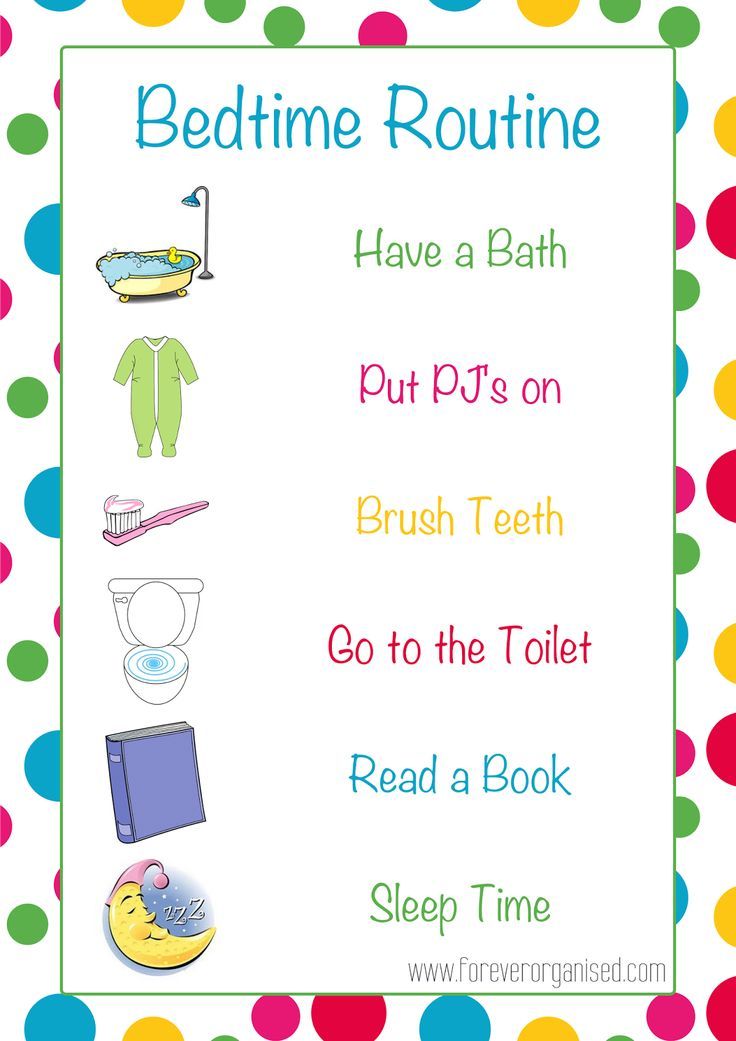 If your child has insufficient levels, it can greatly affect their mornings.
If your child has insufficient levels, it can greatly affect their mornings.
5. Basic examples of morning routines with kids.
I find that most kids do well with a 45 minute window of time to get through a morning routine.
Does it need to take that long? Absolutely not, but I find kids appreciate moving at a slower pace (to look at the random bug on the carpet) and despise rushing.
Give kids some extra padding and they will easily get through their routine by your deadline (boundary).
- 6:30 am alarm clock goes off
- 6:40 am child actually gets out of bed, starts following routine cards.
- 6:45 am child is distracted by toy or book.
- 6:50 am child gets dressed, brushes teeth and hair
- 7:00 am child is downstairs to grab hard boiled egg and whole-wheat bread with peanut butter for breakfast.
- 7:15 am child is ready to start the day or leave the house
This is a very approximate estimate of time for the child.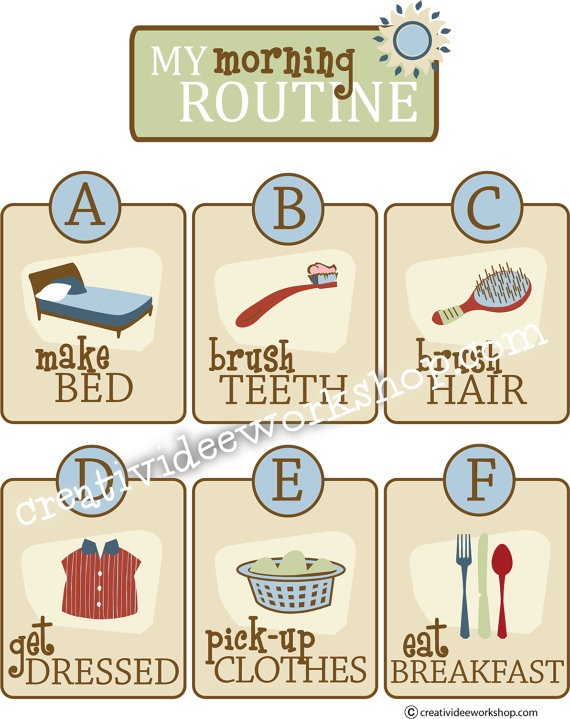 And as the child practices the routine, these time touch points fall into place without reminders. The child naturally flows through the routine on time.
And as the child practices the routine, these time touch points fall into place without reminders. The child naturally flows through the routine on time.
6. Avoid technology at all costs in the am.
Screen-time degrades a child’s ability to focus. This is especially true as kids will reenact what they see on a screen in real life.
These are called schemas – and it’s how kids make sense of what they see in the virtual world. They will act it out in real life to try and understand it.
Avoiding technology in the am sets kids up for success. Save it for the afternoon when chores and school work is complete.
- Related: How to End Screen-Time Without a Fight
7. Consider some form of vestibular or proprioceptive input before asking a child to sit still or focus.
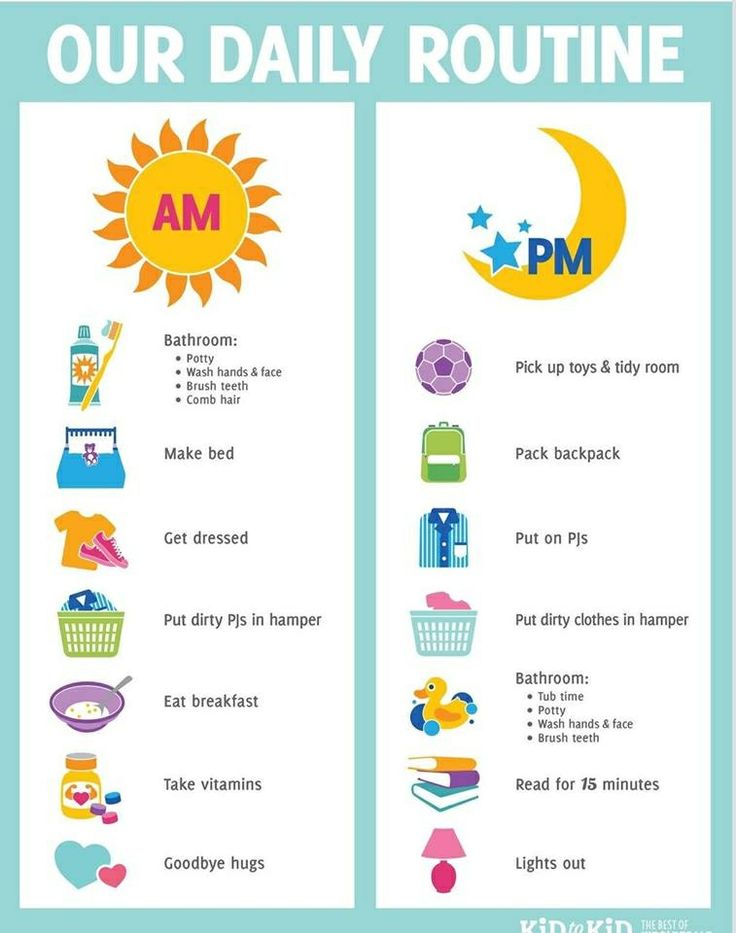
In order for kids to learn to listen, focus and follow directions as they grow, they need to develop proprioception and vestibular sense by experiencing many physical activities during childhood.
Without it, kids can’t pay attention in school because they are too distracted by their own bodies. Putting clothes on, trying new foods, and finishing homework become insurmountable tasks when kids don’t have a strong vestibular sense or well-developed proprioception.
For a complete list of very quick and simple things you can do to get your kids this neurological / sensory input each morning, visit my post on why kids won’t listen.
Frequently Asked Questions On Morning Routines For Kids
How do I get my kids ready for morning?
The best way to prepare your kids for morning is with an early bedtime. Kids stay incredibly content on a 7 pm to 7 am sleep schedule.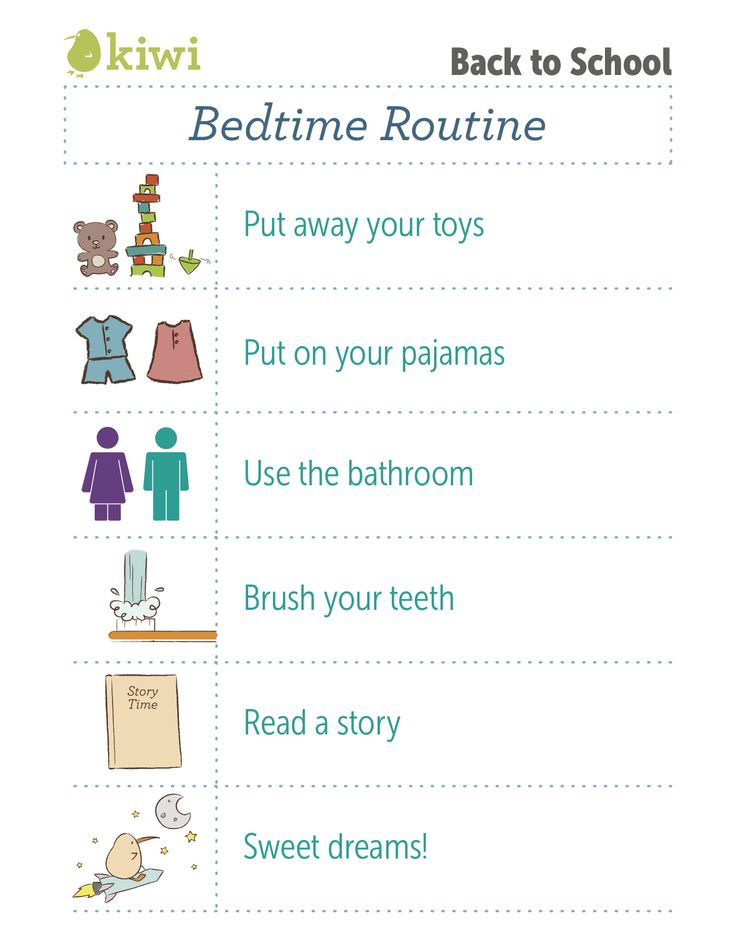 This is a ballpark and every child and family is different; however, when you keep the bedtime around 7-9 pm (as your child gets older, move bedtime closer to 9 pm) and the wake up between 6-8 am, kids truly thrive in the morning.
This is a ballpark and every child and family is different; however, when you keep the bedtime around 7-9 pm (as your child gets older, move bedtime closer to 9 pm) and the wake up between 6-8 am, kids truly thrive in the morning.
What are the morning activities for kids at home?
Any type of activity that involves some sort of proprioceptive or vestibular input will help your child enjoy a great morning! Things like setting the breakfast table, clearing the breakfast table, jumping on a small indoor trampoline, going up and down the stairs — all simple things, but help get your child’s neurological system aligned for the day. For a complete list visit https://themilitarywifeandmom.com/why-kids-wont-listen/.
How do I teach my child a daily routine?
Using a visual routine is the BEST way to help your child learn their daily routine AND be able to follow it independently.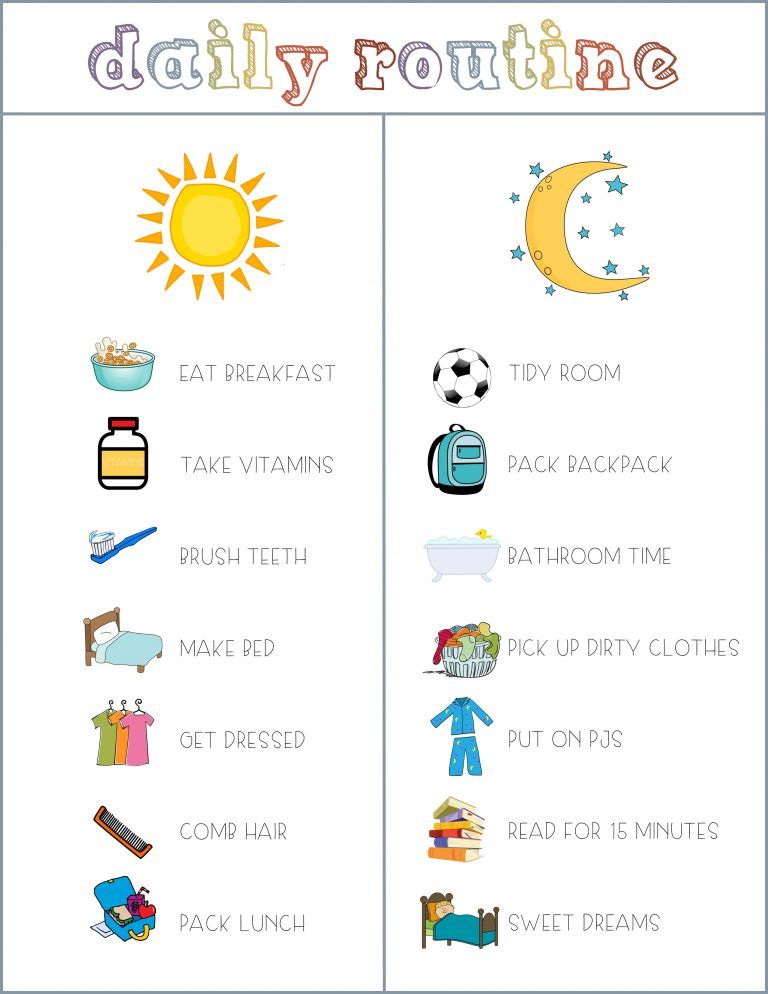 For a complete step-by-step guide on how to get a set of visual routine cards and help your child learn to use them, visit here: https://themilitarywifeandmom.com/printable-daily-schedule-for-kids/
For a complete step-by-step guide on how to get a set of visual routine cards and help your child learn to use them, visit here: https://themilitarywifeandmom.com/printable-daily-schedule-for-kids/
What’s the best daily routine?
The best daily routine is one that you and your child work to put together. Kids are far more willing to cooperate when they participate in creating the routine! Use a set of printable daily routine cards to help kids place them in your agreed upon order and then put them in a place the child can easily see each morning.
Print this free printable!
This post comes with a free printable to give you an easy step-by-step guide to raise independent kids. Plus, remember what independent skills are age-appropriate for your kids!
Here’s a sneak peek…
Download Your Free Printable
- Download the checklist. You’ll get the printable, plus join my weekly parenting newsletter!
- Print.
 Any paper will do the trick, but card stock would be ideal.
Any paper will do the trick, but card stock would be ideal. - Place it on your refrigerator. Use it as a quick reference to keep parenting simple!
Want More On Routines?
- How to Build Cooperation, Independence and Listening Using a Printable Schedule for Kids
- The Best Response When Kids Struggle to Stay Focused With School Work
- How to Help Kids Fall Asleep Fast During Bedtime Routines
- 5 Sample Daily Toddler Routines From Real Moms
- More 1 Year Old Sleep Schedules From Parents
I've created a free email series just for you! If you are struggling with finding a routine, rhythm or schedule, this email series will help you find one that will work for YOUR family. Yes, really. I've seen my sample routines work time and time again for parents. I know it can work for you too.
This free email series will help you:
- Free sample routines for your child
- Best morning routine tips and tricks your kids will actually follow
- All-time favorite parenting hacks for getting more cooperation at bedtime
- Step-by-step guide for using a printable daily schedule with kids
Click here to sign up!
Are you new to this community? Start here, friend.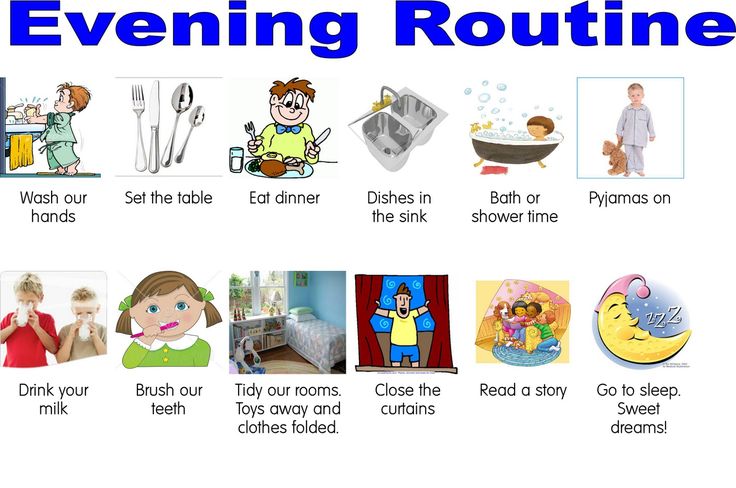
How to Establish a Morning Routine for Kids That Actually Works
You know the easiest way to get the stress out of parenting?
Find the one situation that constantly causes friction and figure out how to make it go smoother.
That’s it. The rest will simply follow suit.
To us, it was the mornings.
Getting an entire family up, dressed, fed and out the door before the sun even comes up could easily be a recipe for disaster (or at least a meltdown or two!) And, I have two kids under the age of 3 that go to two different schools 30 minutes away from our house.
Believe me we have our share of morning meltdowns but I’ve spent some time really working on managing the morning routine for our kids and setting the whole family up to start the day off full of light and happiness rather than whining and misery.
These things have worked really well for our family and hopefully they will help you to start your day off on the right track as well.
Editor’s Note: Finding simple win-win solutions for seemingly complex problems is at the core of positive parenting. Click here to signup for our FREE mini-course How to Be a Positive Parent.
1. Make sure everyone is getting enough sleep.
OK, before we even start looking at the morning routine for kids, we need to address the elephant in the room. It seems obvious and we’ve all heard it before, but the importance of sleep cannot be overstated.
Are your kids getting enough sleep?
Here is a handy chart that breaks down how much sleep kids need depending on their age. You can determine your child’s appropriate bedtime by subtracting the number of hours from the time you need to wake them up in order to get out the door in time.
So, for a two year old who needs to be up by 7am, they need to be in bed by 7pm.
If you have little ones who refuse to sleep, check out these handy guides –
- How to Get Your Child to Sleep (Really!)
- Bedroom Colors that Promote Peaceful Sleep
- Gentle Baby & Toddler Sleep Solutions
2.
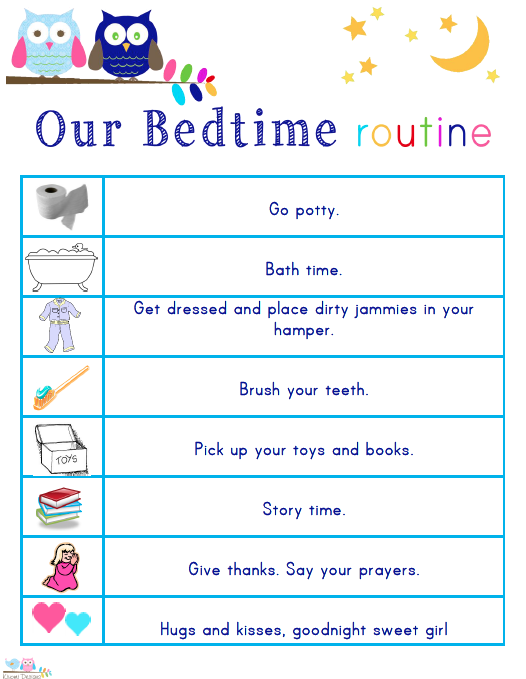 Prepare the night before.
Prepare the night before.Now that everyone is getting enough sleep the next step is to try to minimize the number of responsibilities everyone has in the morning.
- Prepare breakfast the night before. I’m surprised that more parents don’t already do this! Here are a few awesome resources to get started –
- 5 Healthy Breakfasts to Make the Night Before
- Grab it and Go! Healthy Make Ahead Breakfast Ideas
- 25 Make Ahead Breakfast Ideas for Back to School
- Pack lunches. Have you tried bento boxes? Young kids love them and they keep things interesting, not to mention relatively easy to fix. There are tons of simple ideas on pinterest and one of my favorite sites for lunch ideas is Weelicious.
- Choose clothes. Let your child pick out their own clothes the night before or keep a selection of appropriate school clothes at their level so they can quickly choose their outfit in the morning.
 Involving your child in this decision-making process is a great way to give them a little control over their morning routine.
Involving your child in this decision-making process is a great way to give them a little control over their morning routine. - Assign a box/hook/shelf for all of the school essentials so you aren’t searching for backpacks, shoes, lunch boxes etc. each morning. Tip: Assign a place for your briefcase/keys/wallet/phone as well.
3. Get up before your kids.
If you set your alarm for at least 15 – 30 minutes before your kids wake up, establishing a morning routine for kids becomes so much easier and you’ll be setting the whole family up for a successful morning. Ideally you will be showered, dressed, packed up for the day and the most important of all, CAFFEINATED!
Just like children, adults benefit from a regular routine. Consider creating a morning ritual that helps you start your day off well before your kids even wake up.
In our house we go so far as to load up all of our things in the car before we even get the kids up so that we aren’t searching for our briefcase or purse at the last minute along with trying to load up the kids.
It is hard to encourage your kids to prepare ahead of time or keep all of their things in a designated place if you are spending every morning shouting “where’s my phone?” to your spouse.
4. Make a morning routine chart.
If you have younger kids use pictures instead of just words in your morning routine chart and include all of the things that need to get done like:
- Brushing teeth
- Combing hair
- Washing face
- Getting dressed
- Eating Breakfast
- Putting shoes on
- Grab backpack/lunchbox
- Head out the door
Once you have picked a morning routine for kids, go through all of the steps with them talking about each step as you go along your morning. This will help you recognize any glitches or perhaps the need to re-order some of the steps.
Throughout the morning routine, encourage your child to take ownership of these tasks and try not to do everything for them. It might be quicker in the short term to put their pants on for them but you will just contribute to a power struggle that you will pay for in time and frustration down the road.
Any child who is self-sufficient, who can tie his shoes, dress or undress himself, reflects in his joy and sense of achievement the image of human dignity, which is derived from a sense of independence.
–Maria Montessori
Here are a few great resources for establishing Montessori inspired morning routine for kids –
- 8 Tips for Making a Montessori Dressing Corner for Your Child
- Tips for Teaching a Child Dressing Skills
Is your morning routine just not working no matter what you try? Maybe your kids have some catching up to do in their Executive Skills development!
Dr. Dawson, winner of the Lifetime Achievement Award for the National Association of School Psychologists, specifically discusses the example of a morning routine in our “Executive Skills” Masterclass to explain this! This packed masterclass is one of the 60+ masterclasses you get when you join the AFineParent Academy.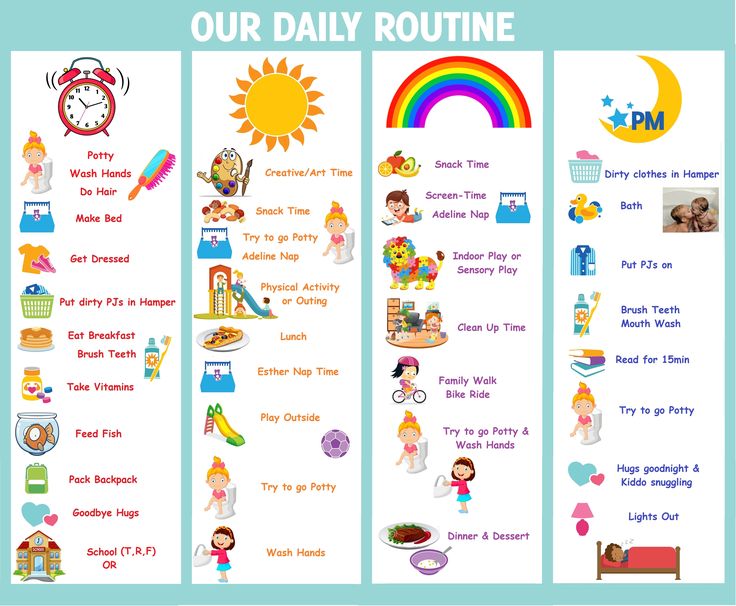 Click here to get INSTANT access now!
Click here to get INSTANT access now!
5. Put the “When … Then” approach to use.
One of my favorite parenting tools is the “when… then” approach as described by Amy McCready of Positive Parenting Solutions.
A When-Then Routine is a tool to help your kids stay motivated to get everything done in the morning—even the “yucky” stuff like brushing teeth and getting dressed. It structures your morning so that all the not-so-fun tasks are completed before the most desirable part of the morning like breakfast (or morning playtime, TV time, etc.).
Identify one thing that your child loves about morning time and make that thing contingent on them being done with the rest of the things on their morning routine checklist. For example, “when you get dressed, brush your teeth and make your bed, then we have breakfast.”
The “when… then” approach works wonders in our house. It is great because it doesn’t really give the child any other options.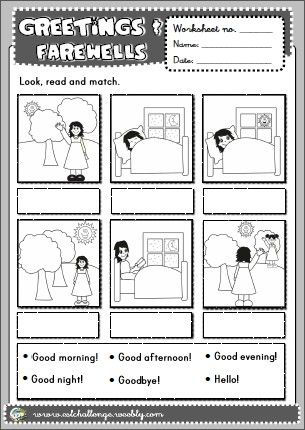 You come at it with the attitude that it doesn’t really matter to you either way.
You come at it with the attitude that it doesn’t really matter to you either way.
If they want breakfast then they have to do those things first and if they choose not to then they will suffer the natural consequence of being hungry and likely won’t make the same decision the next time.
Just be sure to pick something where you can stay firm and don’t cave, otherwise you will render the “when… then” useless.
6. Remain calm and connected.
Your kids can sense when you are rushed and frantic and they will slow down and resist. If you are following all of the tips above you shouldn’t be rushed but things can come up at the last minute.
When you feel yourself becoming frazzled, get down on the same level with your child and explain to them why you need their help in that moment and give them a task to take ownership of.
Kids tend to mirror your actions and tone so if you find yourself yelling a lot in the morning or showing frustration in physical ways (pointing, huffing and puffing etc.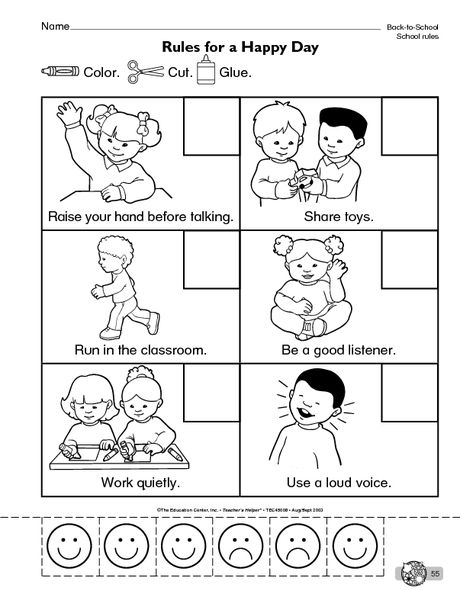 ), try to really focus on your attitude and use a calm voice.
), try to really focus on your attitude and use a calm voice.
One trick that we have found especially helpful is to almost whisper when you find yourself getting frustrated. This will help you remember to use a calm voice rather than raising your voice or yelling.
Getting ready and getting everyone out the door in the morning is a task for the whole family and all members of the family need to contribute to this effort.
Here are some great resources to get out the door without resorting to yelling matches –
- How to Stop Yelling at Your Kids
- How to Stay Calm When You Are Losing It
- How to Keep Yourself From Yelling at Kids Even When You are Hopping Mad
7. Make weekends special.
It’s a good idea not to stray too much from the routine on the weekends. Please still make sure that your kids are getting enough sleep but you can enjoy the more relaxed pace by making a special breakfast or having story time before doing the usual routine like brushing teeth and brushing hair. You can even start a special weekend tradition like pancakes or family time watching cartoons.
You can even start a special weekend tradition like pancakes or family time watching cartoons.
In our house we always go to the farmer’s market on Saturday mornings and even our young toddler really looks forward to this special morning that happens only once a week. She is always excited about picking out her clothes (usually a raincoat and boots in Oregon) and dreaming up all of the delicious things we will find at the market.
Each member of the family has their special treat that we look forward to: the one year old eats his weight in berries, the toddler gets a honey stick or fresh pastry, and the adults get local freshly brewed espresso. The whole family looks forward to these mornings so we are all motivated to get up and get out the door and start our weekend feeling energized and excited to spend time together as a family.
Trying to establish a morning routine for kids that actually works may seem in the beginning like a lot of effort, but the ease with which (most of) our mornings flow these days has made the effort well worth it.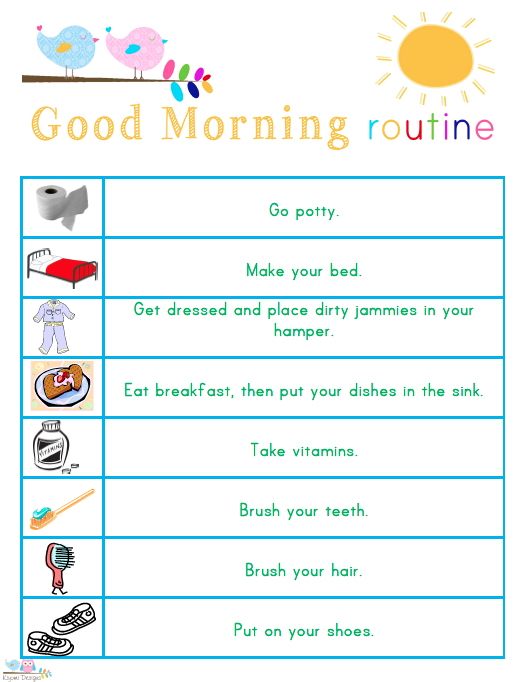
Instead of being the most stressful time of the day, our mornings are now a whole lot calmer and set the pace for a beautiful day ahead.
What more can you want from life? 🙂
Love this article? Receive others just like it once per week directly in your mailbox. Click here to join us… we’ll even get you started with our FREE mini-course How to Be a Positive Parent.
The 2-Minute Action Plan for Fine Parents
Here are our quick contemplation questions for today –
- Do you have a morning routine for kids? Is it actually working for you? Could you benefit from tweaking it or printing out a morning routine chart to implement it with your family?
- Is there something you are cramming into your morning routine that could be done the night before (eg., choosing your clothes or your child’s clothes, preparing either partially or completely your next day’s breakfast/lunch, getting the backpacks/briefcase ready etc.)?
- Are you giving yourself enough time to completely wake up (and have that much needed cup of coffee in peace!) before the kids wake up?
Of course, as always, there are no right or wrong answers.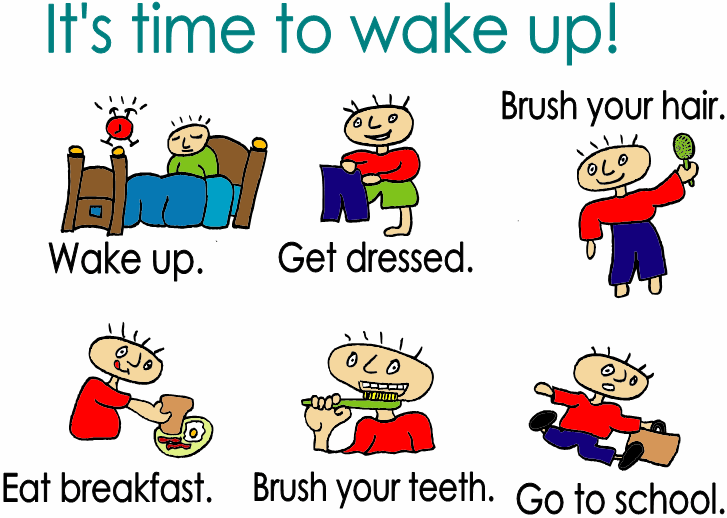 The aim of these questions is to simply help you figure out where you are, and what you can change, to make mornings a great time of the day for you and your entire family!
The aim of these questions is to simply help you figure out where you are, and what you can change, to make mornings a great time of the day for you and your entire family!
The Ongoing Action Plan for Fine Parents
Examine your family’s sleep schedule and make sure that all members are getting an appropriate amount of sleep. If not, adjust your obligations and activities so that everyone is getting to bed on time. After a few weeks of getting enough sleep look back and see if you have noticed an easier morning routine with your kids.
Spend some time as a family discussing the importance of working together to get everyone out the door in the morning in a joyful mood. Get buy-in from all family members when creating your morning routine chart and then reference it regularly. Then, work together to plan a fun “off” morning for the weekend that everyone will look forward to.
How to wake up a child to school or kindergarten without tears and tantrums? Easy Morning Rise Rules
Every parent is familiar with this traditional beginning of the day: early in the morning, it is still dark outside, everyone is going to work.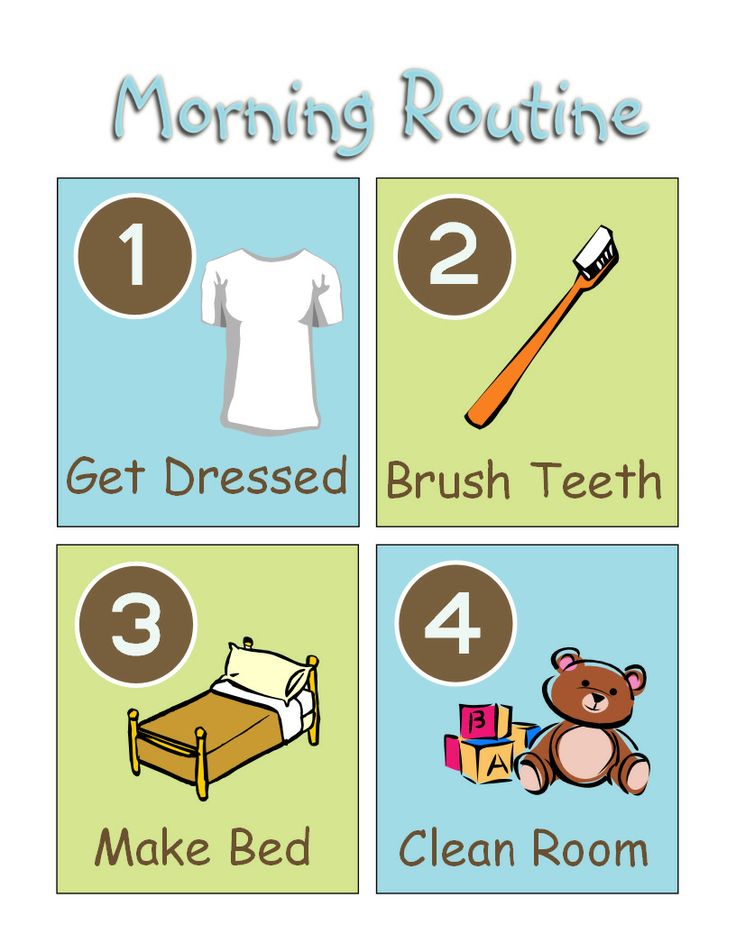 It's time to wake up the baby. And this is where it all begins ... Whims, tears, hysteria, a blanket and pillow scattered on the floor, a spoiled mood. Time is running out, and the son or daughter is still in bed.
It's time to wake up the baby. And this is where it all begins ... Whims, tears, hysteria, a blanket and pillow scattered on the floor, a spoiled mood. Time is running out, and the son or daughter is still in bed.
It's no secret that for many parents, waking up and raising a child to kindergarten or school becomes a real problem. Therefore, today we will talk about how to make the morning really good for mom and dad, as well as for the little "sleepy".
Contents:
- How much sleep does a child need?
- Why is it hard for children to get up in the morning?
- How to put your baby to sleep: tips for parents
- 10 conditions for comfortable sleep
- Wake up on time and in a good mood
- Rise to kindergarten
- School fees
- How to wake up a teenager?
- What should not be done when the child wakes up?
How much sleep does a child need?
Prostock-studio/Shutterstock.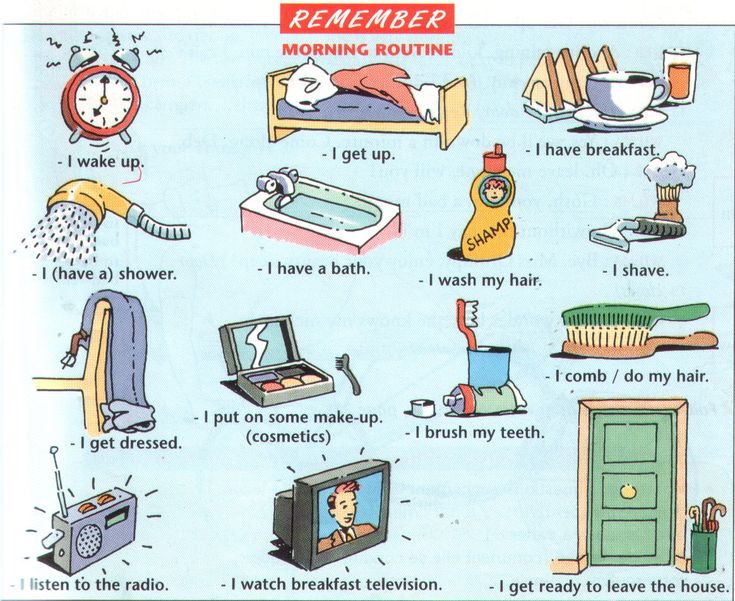 com
com
Sleep is a special physiological state of our body. During sleep, physical strength is restored, important hormones are produced, and the brain absorbs all the information received during the day.
Each age has its own daily norm of sleep:
- Babies under one year old need to sleep from 12 to 17 hours a day;
- children from one to three years old are recommended to devote 11-14 hours to sleep;
- preschoolers (3-7 years old) should sleep 10-13 hours;
- schoolchildren (7-14 years old) need 9-11 hours of sleep per night;
- Adolescents (14-17 years old) should get at least 8-10 hours of sleep.
The older the child, the fewer hours he needs to restore physical and mental strength.
But it is difficult for children to understand the importance and necessity of this process. Therefore, in the evening they try to delay the time of going to bed as long as possible, and daytime rest is most often simply ignored.
Why is it difficult for children to get up in the morning?
Prostock-studio/Shutterstock.com
There are several reasons why a child has trouble getting up in the morning.
1. Sleep disorder
The baby's body does not have enough time to recover. In other words, the daily need for rest is not met.
This also includes the quality of sleep: daytime worries and fears develop into nightmares, which prevents the child from having a good rest.
Read an interview with a psychologist on the topic "Restful sleep!" How to get rid of nightmares in children and adults?
2. Inability of parents to properly wake up a child
Abrupt awakening has a negative effect on the nervous system. Therefore, the baby will pretend to be sleeping until the last moment in order to delay this unpleasant moment.
3. Changing the daily routine
If a child is used to sleeping until noon, and then they suddenly start waking him up at 8 o'clock in the kindergarten, then, of course, it will be very, very difficult for him to immediately get used to the new regimen.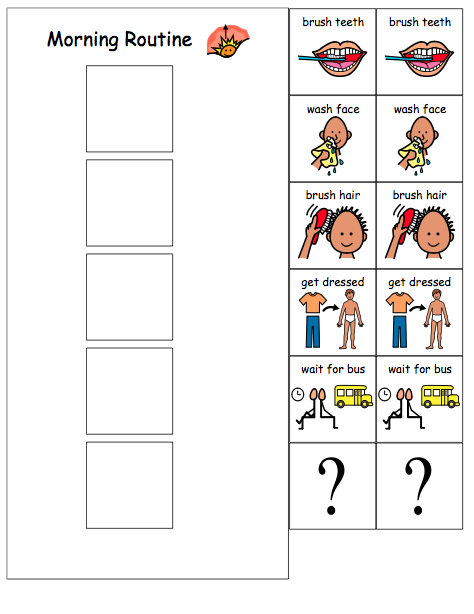
4. Change of the season
It is hard for an adult to wake up when it is dark and cold outside, let alone small children.
5. Psycho-emotional well-being
Often, heavy morning rises are associated with the child's psychological distress. He may have conflicts with peers or teachers, or he could become a victim of bullying. Hence the reluctance to get up in the morning and go to kindergarten or school.
How to put your baby to sleep: tips for parents
Prostock-studio/Shutterstock.com
In order for your child to wake up in the morning refreshed and full of energy, it is necessary that he gets a good night's rest.
As a rule, children are reluctant to go to bed, preferring to watch another cartoon or play another interesting game. Therefore, it is important for parents to know how to properly prepare the baby for sleep:
- Try to put your son or daughter to bed at the same time, focusing on the daily sleep rate.
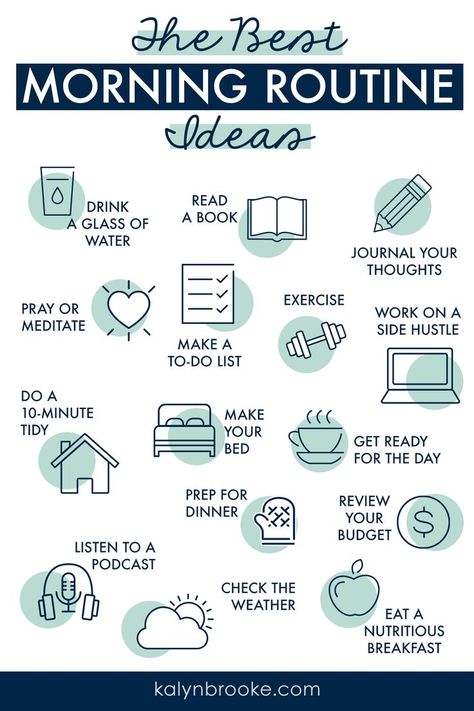 For example, if you need to wake up a preschooler at 7 o'clock, then he should go to bed no later than 9hours of the evening. Children under 8-9 years old are recommended to be laid by one of the parents. The child can lie down in bed by himself, you just need to tuck in the blanket or wish good night.
For example, if you need to wake up a preschooler at 7 o'clock, then he should go to bed no later than 9hours of the evening. Children under 8-9 years old are recommended to be laid by one of the parents. The child can lie down in bed by himself, you just need to tuck in the blanket or wish good night. - If you have to change your routine due to a move or kindergarten, adjust your bedtime gradually over 2-3 months.
- On weekends, it is important not to disrupt the child's sleep and wake schedule. A deviation of an hour and a half is allowed, but no more.
- Balance the physical and mental stress during the day. If the child after school spent the whole evening at home, before going to bed he needs a walk or a little physical activity.
- A few hours before bed, exclude all noisy games, as well as the use of gadgets. Tune your child to a "calm wave." A relaxing bath, a light massage or a good fairy tale can help you with this. It's good if this becomes your little ritual before going to bed.
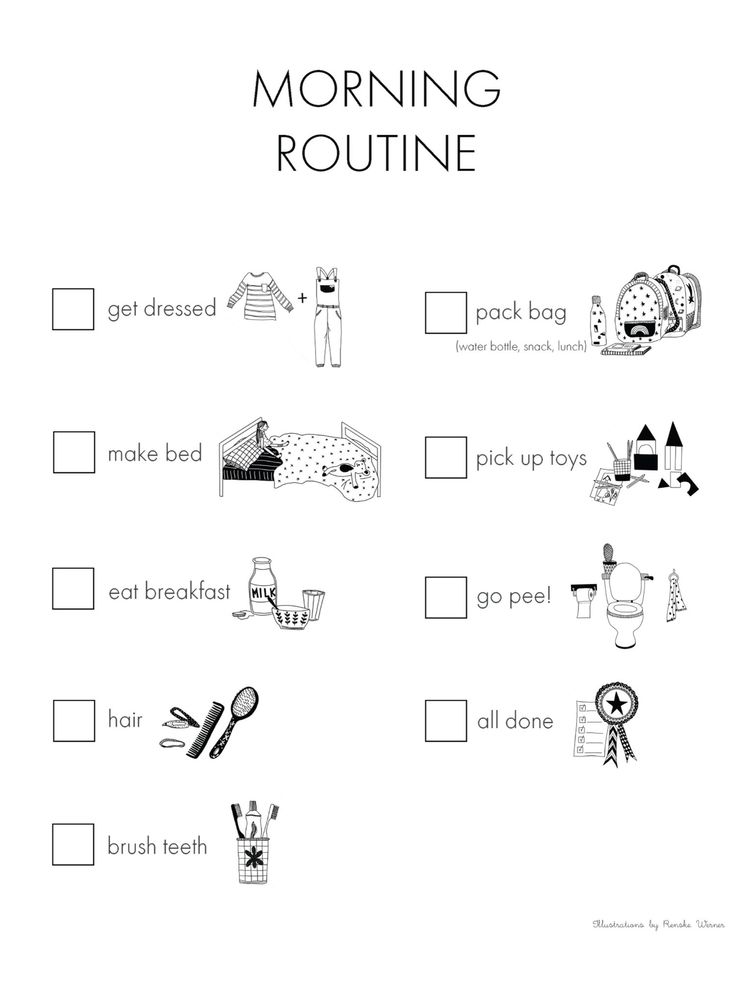
- Try not to scold or punish your child at bedtime.
- Also an important factor for a calm sleep of a child is the general daily routine in the family. It is not necessary to go to bed at the same time with your son or daughter. It is enough to turn off the TV, dim the lights in the rooms and exclude loud conversations.
- Soft toy will help your baby fall asleep faster and not be afraid of the dark.
- A hug or a kiss goodnight creates a sense of security that promotes good sleep.
- Teach your child to get ready for the next day in the evening. Get your clothes ready, pack your backpack, learn your lessons. So he will have the opportunity to sleep longer in the morning and not fuss in an attempt to do everything.
By following these simple rules, you will teach your child to have a good rest after a busy day.
10 ways to sleep comfortably
Prostock-studio/Shutterstock.com
- Going to bed at the same time.

- The air temperature in the bedroom is not higher than 20 degrees.
- Humidity within 60%.
- Dinner 1.5-2 hours before bedtime.
- Soft sleepwear that allows the skin to breathe.
- Fresh bed linen made from natural fabrics.
- Night light with subdued light, if the child is afraid to fall asleep in the dark.
- Comfortable, spacious and safe bed.
- Absence of loud sounds and extraneous noise.
- Sleep ritual (fairy tale, relaxing bath, warm shower or massage).
Waking up on time and in a good mood
Getting up to kindergarten
Prostock-studio/Shutterstock.com
If the child goes to bed on time and follows the routine, there should be no problems with waking up. But in practice, things often turn out differently.
How to wake up a preschooler without whims and tears? Experienced mothers share their secrets on the forums:
“My son is 3.5 years old.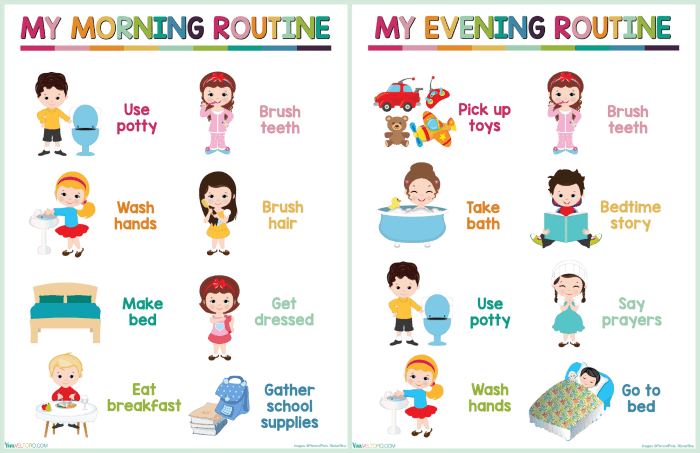 Morning exercises help us get up in the morning. I sit down on the bed with the child, I begin to slowly rub his legs and arms, then I bend and unbend them to some funny rhyme, and then he himself connects. We do a couple of light exercises and get up to get dressed.
Morning exercises help us get up in the morning. I sit down on the bed with the child, I begin to slowly rub his legs and arms, then I bend and unbend them to some funny rhyme, and then he himself connects. We do a couple of light exercises and get up to get dressed.
“Our daughter only wakes up to cartoons. Until you turn it on, you will never tear your head off the pillow.
“It's better not to touch my princess for the first 20 minutes after waking up, hysteria is guaranteed. And then nothing, she gets up and slowly begins to gather herself. ”
What teachers and psychologists advise:
- The golden rule: parents wake up first, then the child. This motivates and mobilizes him to get out of bed.
- Try to make sure that the child is waiting for something pleasant when he wakes up. A delicious breakfast (the aromas of which wake you up better than any alarm clock), your favorite drink or a funny cartoon (just choose not very long ones, otherwise you risk being late for kindergarten and work).
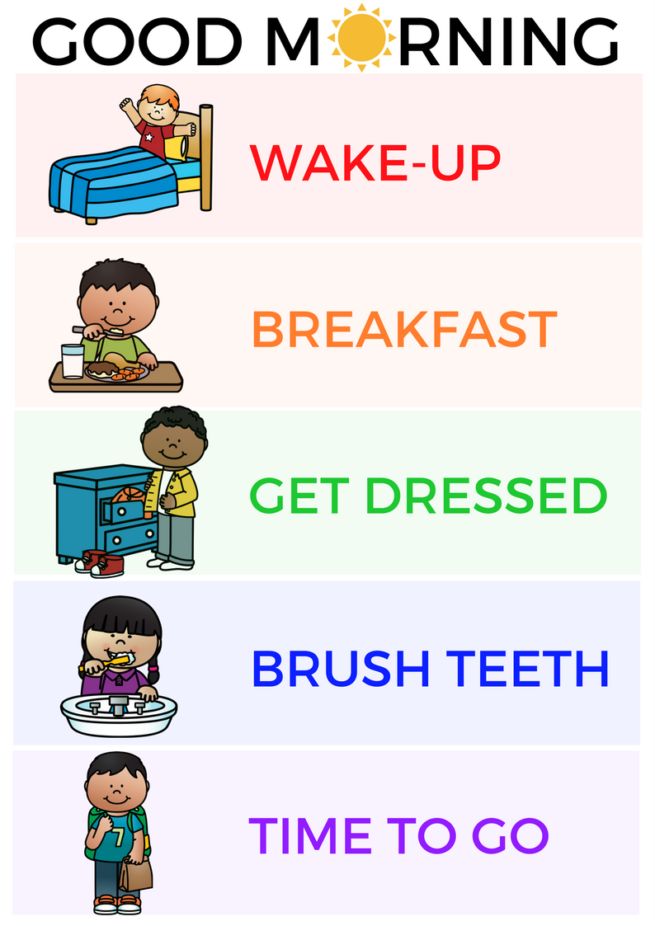
- Awakening should be smooth, without loud sounds and bright lights. Use tactile contact: gently touch the baby and say in a calm voice that it's morning and it's time for him to get up.
- A child's morning should be filled with positive energy. Therefore, in order not to be nervous yourself and not to break down on the baby, you should have a margin of time so that the child's body can go into a state of wakefulness.
- Not only evening, but also morning rituals are useful. It can be a funny song, after which you can no longer lie in bed, or morning exercises with dad, or cooking a delicious breakfast together. The main thing is that the child receives positive emotions from this and a charge of vivacity for the whole day.
Getting ready for school
Prostock-studio/Shutterstock.com
To wake your child up for school, you can follow the same rules as with preschoolers (see above).
Here are some more recommendations:
Control gadgets
A child at this age is already able to understand the importance of sleep for the body.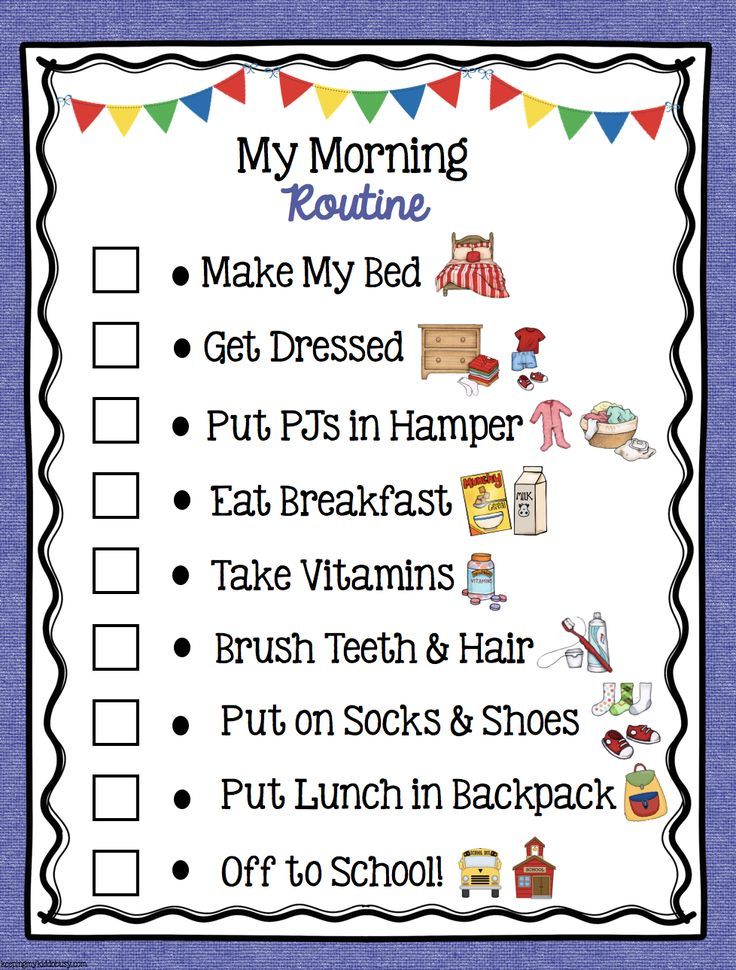 Moreover, he must learn to wake up on his own or with the help of an alarm clock. But many schoolchildren prefer to spend evening and night time on gadgets, forgetting to go to bed on time. As a result, they do not get enough sleep, they are late for school and “nod off” all day.
Moreover, he must learn to wake up on his own or with the help of an alarm clock. But many schoolchildren prefer to spend evening and night time on gadgets, forgetting to go to bed on time. As a result, they do not get enough sleep, they are late for school and “nod off” all day.
Therefore, it is important for parents to monitor their child's compliance with the daily routine, as well as the use of smartphones and tablets.
Use the Kids360 application, which not only restricts the use of the gadget by screentime, but also filters inappropriate content that a child may receive. Thanks to the app tracker, parents will always be aware of how much time their child spends on a smartphone or tablet. You can also set up a schedule (what time and what applications the child can access or play) and manage access to applications.
Encourage proper sleep
Make a rule: no internet or computer games after 10 pm. The time left before bedtime can be spent getting ready for tomorrow, taking a relaxing bath, or talking about tomorrow's plans.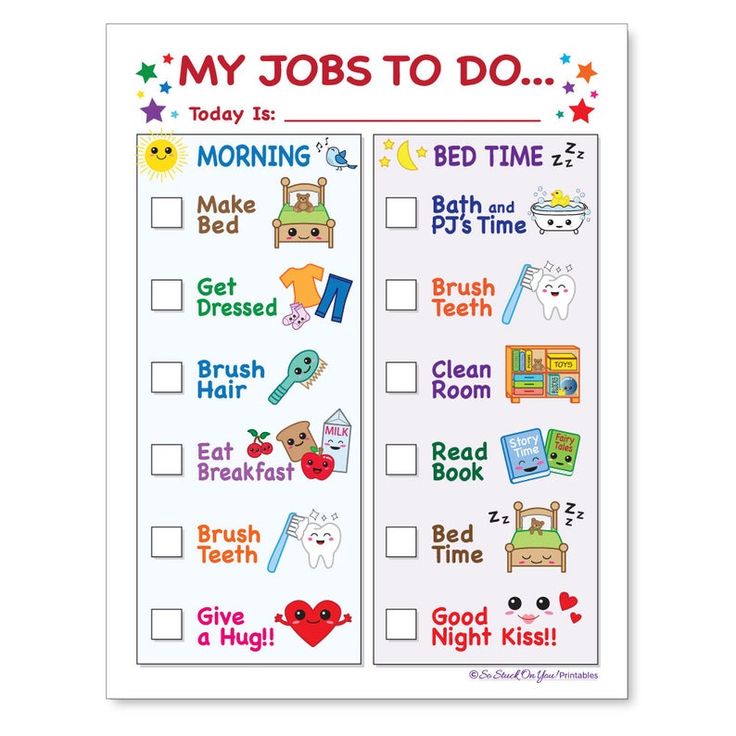
Take your time in the morning
Prostock-studio/Shutterstock.com
Let your son or daughter lie in bed after the wake-up call for 5-10 minutes.
Start the morning right
A glass of water at room temperature or a light exercise will start the processes in the child's body and help him stock up on energy for the whole day.
Morning shower will also help to banish drowsiness and cheer you up.
Learn to get ready in the evening
The child's briefcase and clothes for tomorrow should be prepared in the evening. Make it a habit for your student.
Use sleep trackers
Modern technology is a great help for parents. Children's smart watches and fitness bracelets support special applications that analyze the phases of a person's sleep and allow you to choose the best time for an alarm (during the fast phase, when waking up is easiest).
How to wake up a teenager?
Prostock-studio/Shutterstock.com
Once a child enters adolescence, it becomes more difficult for parents to insist on following their daily routine.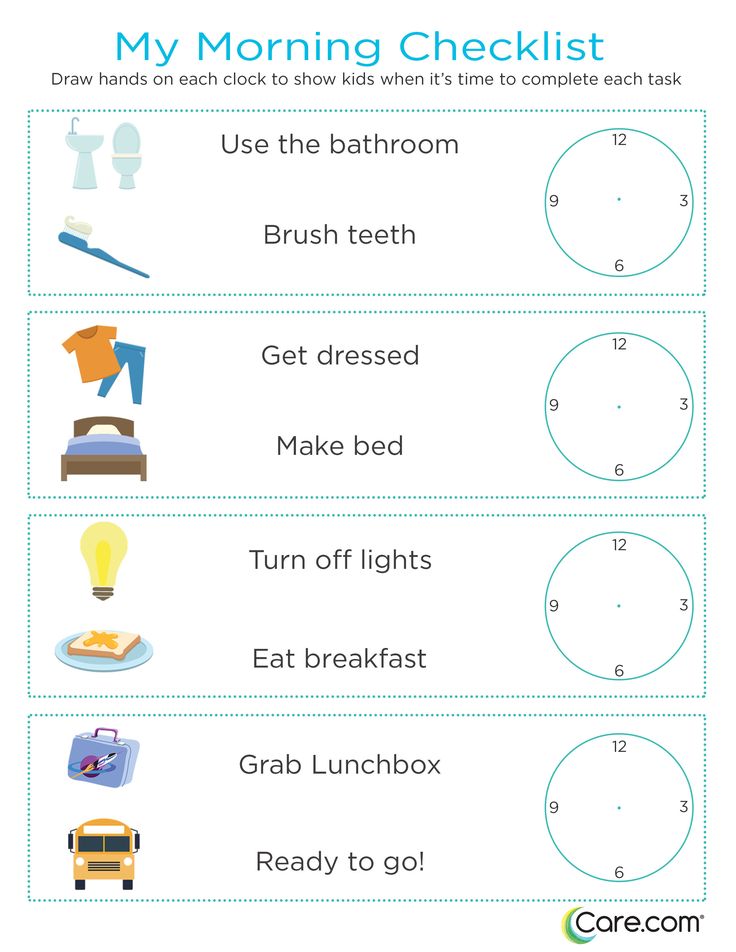 After all, many guys return from a walk only by 10-11 pm, and go to bed already well after midnight.
After all, many guys return from a walk only by 10-11 pm, and go to bed already well after midnight.
As it turned out, the point is not so much in the unwillingness of teenagers to go to bed early, but in hormonal changes in their body.
American researcher Kayla Wahlstorm studied the characteristics of teenage sleep for 20 years and came to the conclusion that during puberty, the rhythm of the production of the sleep hormone melatonin is lost in children. Therefore, teenagers do not want to sleep until about 11 pm, and getting up before 8 am is tantamount to torture for them. Even if the child goes to bed early, the hormone melatonin will still be produced at the appointed time.
At the same time, chronic lack of sleep is very harmful for a growing organism. Kayla Kalstorm found that teenagers who sleep less than 8 hours a night are more likely to be depressed and use alcohol and drugs.
What should parents of teenagers do so that their children get enough sleep at night and get up easily in the morning? Psychologists recommend:
- Do not take responsibility for getting your son or daughter up in the morning in a timely manner.
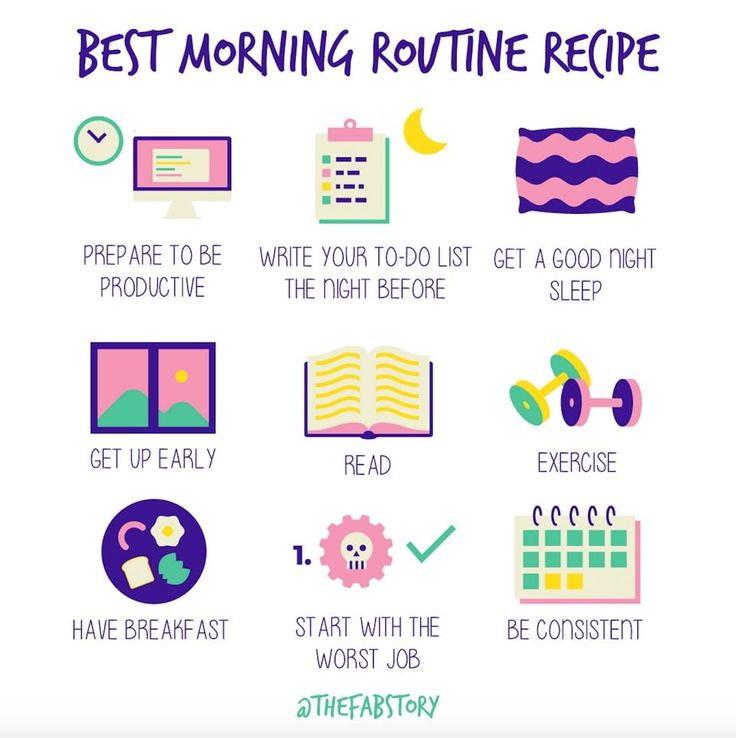 Overslept and late for school - this is the problem of the child. He walked until late and did not have time to learn his lessons in the morning - this is also a problem for the child.
Overslept and late for school - this is the problem of the child. He walked until late and did not have time to learn his lessons in the morning - this is also a problem for the child. - The teenager should be woken up by an alarm clock. Not mom, not dad, not grandma.
- Make sure that the child, if possible, gets enough sleep during the day or on weekends, eats well and does not abuse gadgets and social networks.
- Entrust the child with some important business in the morning: prepare breakfast, clean up after the pet, help pick up a younger brother or sister for kindergarten. At the end of the week, if the teenager has conscientiously treated his duties, he can be encouraged with something.
What should not be done when the child wakes up?
Prostock-studio/Shutterstock.com
Waking up from sleep is a "start" of all body systems, which requires a certain amount of time.
If a person is suddenly awakened, it will have a negative effect on his nervous system.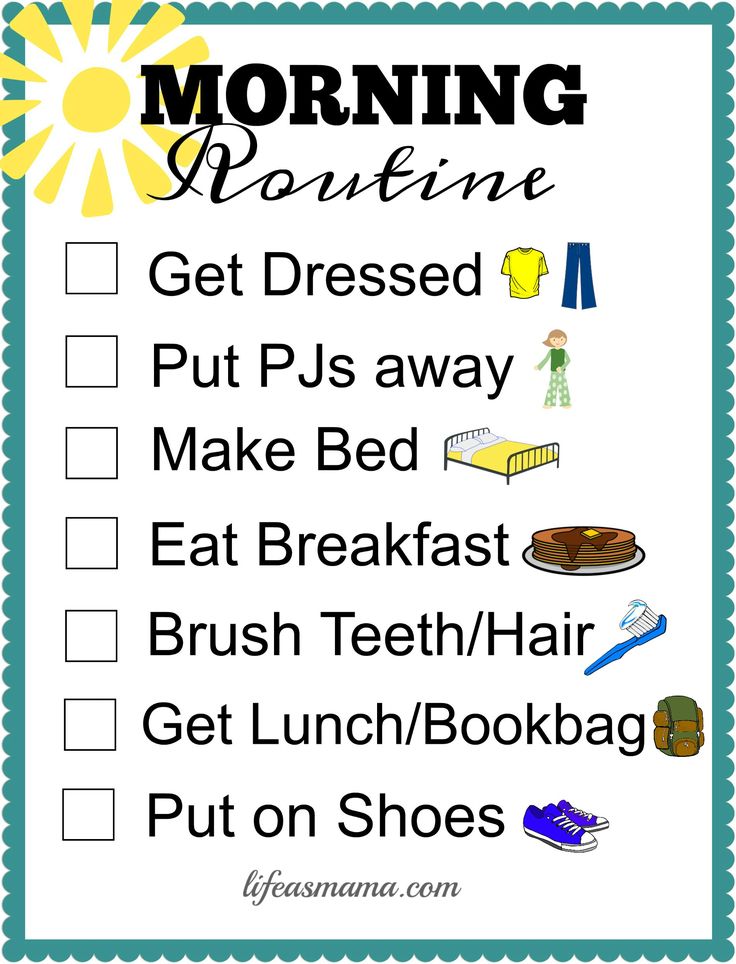 Dizziness, headache, tachycardia, or a panic attack may occur.
Dizziness, headache, tachycardia, or a panic attack may occur.
However, many parents make the same mistakes every morning:
- abruptly burst into the child's room, turn on a bright light;
- tear off the blanket from the baby, pull him by the arms or legs, shake him;
- turn on loud music or TV;
- shout at son or daughter, threaten him;
- bring a ringing alarm clock to the child's ear;
- wake up in a hurry, constantly rush.
After such an awakening, the child, as a rule, begins to act up, cry and refuses to go to kindergarten or school.
If you want a light and good morning for you and your child, do not forget that the transition from sleep to wakefulness should be gradual and unhurried.
Do not forget to follow the correct daily routine, put the child to bed on time and monitor the balance of physical and mental stress, and then you will forget about the heavy morning rises!
Please rate the article
It is very important to us!
Average rating: 3. 8 / 5. Votes: 13
No ratings yet. Rate first!
Receive a school preparation checklist to your mail
Letter sent!
Check e-mail
Child's daily routine, nutrition, development at 6 months
04/19/2019
37
Approximate daily routine of a child
6 months
The daily routine of a 6 month old child is becoming more and more stable:
- is formed with predictable segments
- Regular bedtime appears
- The period of wakefulness of the child increases
- daytime sleep.
Some babies are comfortable with two naps during the day, others sleep three times a day until 8-9 months.
It is worth paying attention to the duration of daytime sleep - morning and afternoon sleep should be at least 1-1.5 hours long so that the child's body has a good rest. The third dream may remain short, it is better to start it between 15.00-16.00. Make sure that it does not end too late, otherwise the time for evening bedtime will shift.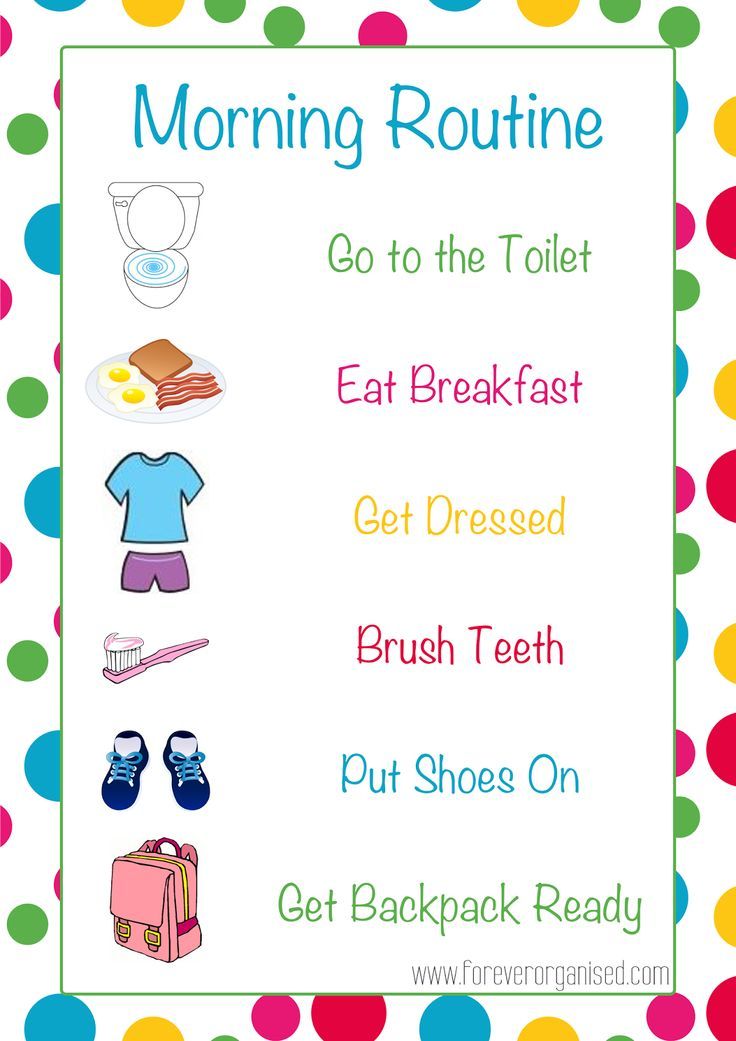 Morning and afternoon naps are recommended to be done at home, the third nap can be spent outside in a stroller.
Morning and afternoon naps are recommended to be done at home, the third nap can be spent outside in a stroller.
When going to bed early, the best time to wake up in the morning is 06.30-07.00.
A six-month-old baby is already physiologically ready for early bedtime. The optimal time for leaving at night will be between 18.00-20.00. You will have a clear bedtime ritual that will help the child relax and make the process of bedtime easier. The ritual must be repeated daily. It takes 20-30 minutes to complete it.
Now, when forming the daily routine, one should focus primarily on the recommended waking time - in six months it increases to 2.5 hours with an established regimen with three daytime sleeps. Signs of fatigue in a child are already harder to notice, so you can miss the moment when the baby is ready for bed.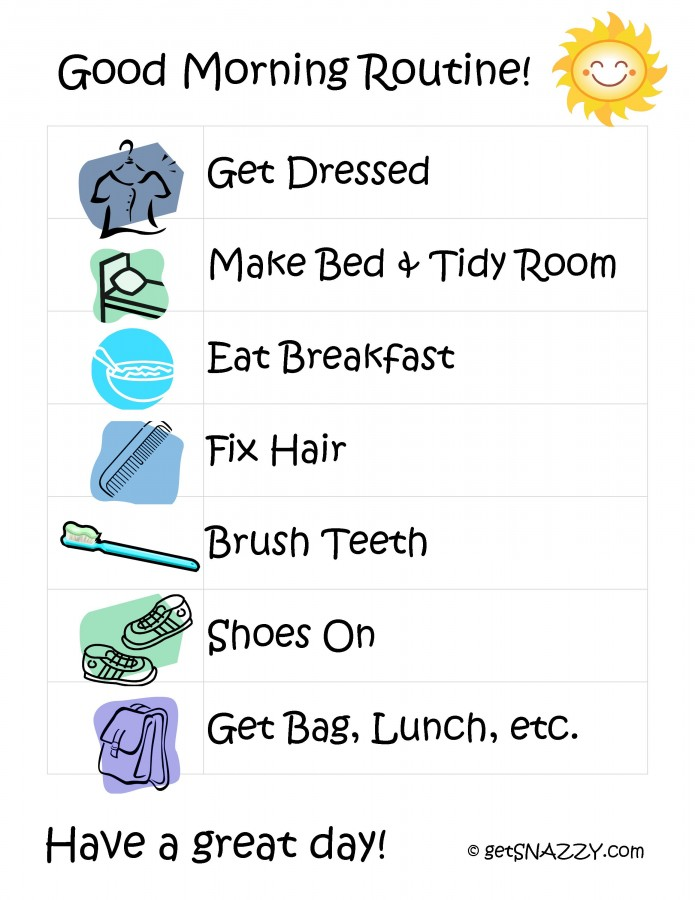
Total amount of sleep
Now the child needs to sleep 13-14 hours a day. Night sleep is 11-12 hours with awakenings for 2-3 feedings while breastfeeding. The number of night awakenings in formula-fed babies will be less. The total duration of daytime sleep at this age is about 2.5-4 hours.
Monitor your baby's condition and follow the main recommendations of the table to understand how many hours of sleep he needs and correctly build a daily routine that will suit your six-month-old baby.
A table on the sleep and wakefulness of a child at 6 months will help you with this:
You can adjust the regime and adapt it as your baby grows in the Club MODE FROM A TO Z - read more.
What affects baby's sleep:
1. By 6 months, your baby has already learned to roll over from back to stomach and back. Now he is gradually mastering new skills: he learns to pull himself up at the support, get on all fours, sit on his own and actively prepare for crawling.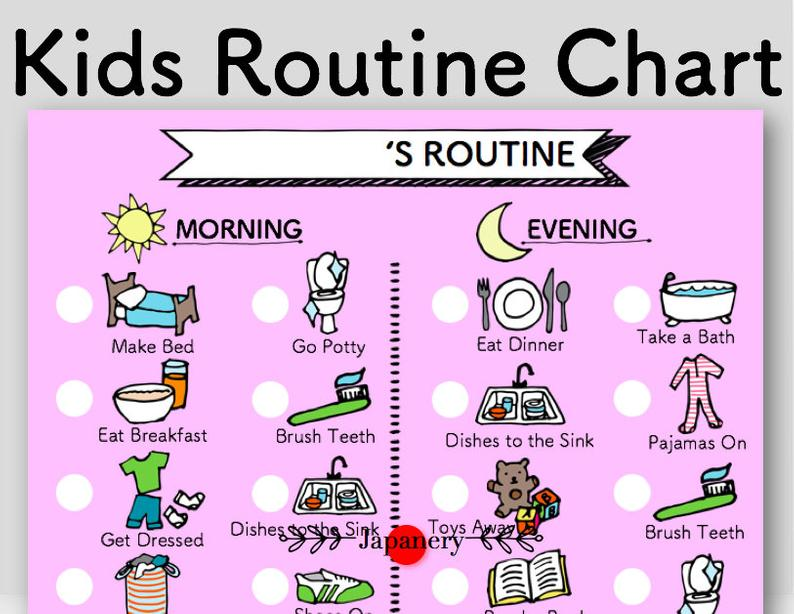 The baby can continue to practice new skills both during the day and in the crib during sleep. At such moments, he often wakes up and sleeps restlessly. This is part of the natural development of the child.
The baby can continue to practice new skills both during the day and in the crib during sleep. At such moments, he often wakes up and sleeps restlessly. This is part of the natural development of the child.
To help him get used to the new possibilities of his body, practice new skills while you are awake. Show how you can lie back down from a sitting position. And if before the child did not mind spending a lot of time in the stroller, now he needs time and space for active play during wakefulness. After 7-14 days, the child’s sleep will improve.
2. Skipping naps and going to bed too late at this age can lead to overtiredness, protests before bed and frequent nighttime awakenings. To prevent this from happening, try to follow a clear daily routine.
3. At six months, the baby may show the first signs of separation anxiety. Having become more independent, he realizes that he is not one with her. And the baby develops fear and anxiety that the mother will leave and will not return.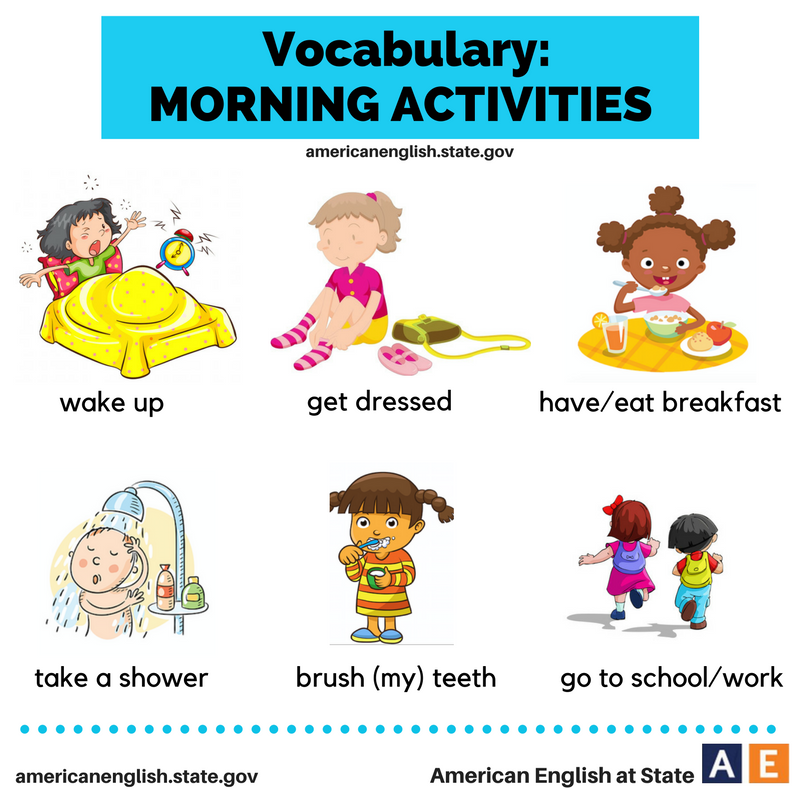 If you find your baby won't let go of you during bedtime, extend the ritual to include carrying, massages, hugs, and kisses. Offer your child a sleep toy that smells like you and "guards" their sleep. It is also worth spending more time with the child one on one, without being distracted by other things.
If you find your baby won't let go of you during bedtime, extend the ritual to include carrying, massages, hugs, and kisses. Offer your child a sleep toy that smells like you and "guards" their sleep. It is also worth spending more time with the child one on one, without being distracted by other things.
4. Teething is another factor that affects the sleep of children of this age. In the acute period, help the baby in every possible way, use teething toys and anesthetic gel as recommended by your pediatrician. As soon as the acute period passes, return to the previous sleep conditions and daily routine.
Watch the free workshop MY BABY SLEEPING BADLY AT NIGHT: 3 SOLUTIONS if your child is having trouble sleeping at night.
Child's diet
6 months
Breast milk and infant formula are still the main complete food for the baby, from which he receives important nutrients.
But at 5-6 months you will notice that he has begun to show interest in adult food - watching you eat, following the spoon with his eyes, opening his mouth and smacking his lips.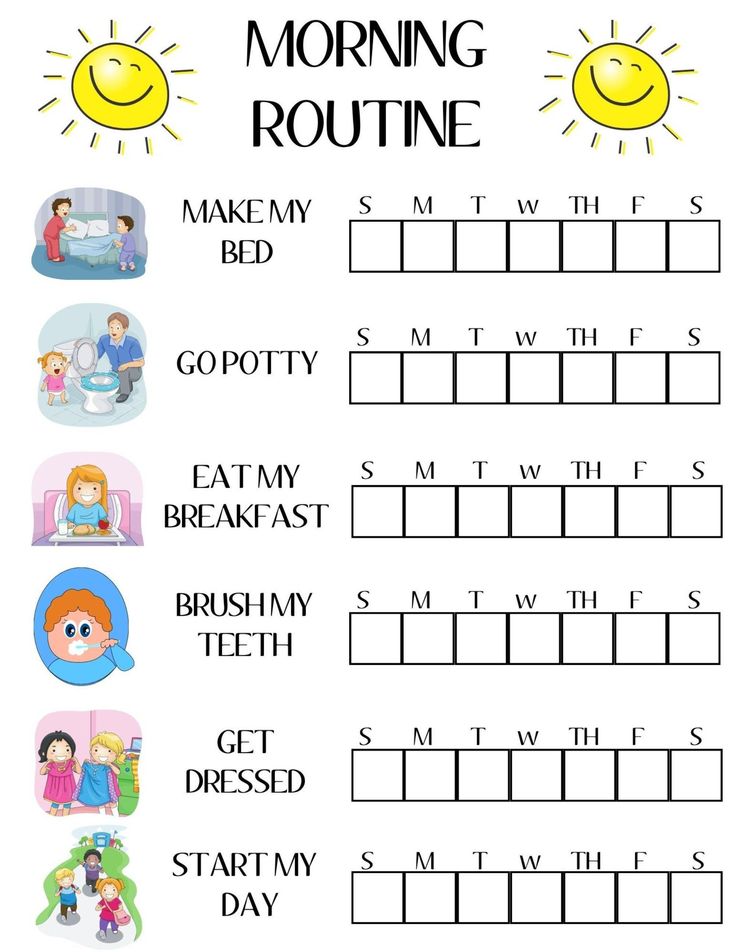 At six months, it is important to maintain this food interest in him, gradually expanding the child's nutrition. For this purpose, complementary foods are introduced. It is from the age of six months that WHO recommends including adult food in the diet of a breastfed child.
At six months, it is important to maintain this food interest in him, gradually expanding the child's nutrition. For this purpose, complementary foods are introduced. It is from the age of six months that WHO recommends including adult food in the diet of a breastfed child.
Complementary foods can be started with vegetable puree. Choose zucchini, cauliflower, broccoli. Then gluten-free cereals are introduced. If the child is not gaining weight, then complementary foods usually begin with cereals.
Water is also added to the diet from 6 months. But modern pediatricians do not recommend giving juices to a child in the first year of life.
The amount of complementary foods is small - in the first days, half a teaspoon of puree is enough for a baby, then the serving volume gradually increases over 10 days to the required norm. Feed one food and see how your baby reacts. The best feeding time is the first half of the day.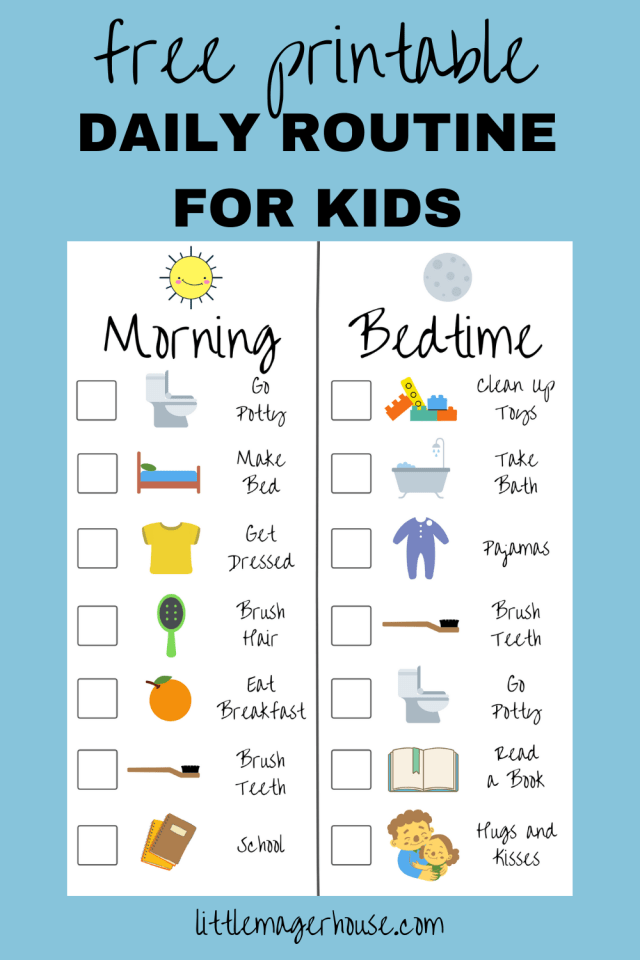
By the age of 6 months, the feeding regimen is formed. The child eats on awakening and shortly before bedtime up to 5-6 times a day. Attachments to the breast are short, as the child is often distracted during feeding. The most frequent feedings are in the evening and active sucking is shifted to the last 2-3 hours before waking up.
The amount and frequency of feedings should be discussed with the pediatrician.
Development of the child
Thinking
The baby now distinguishes well between friends and strangers and can show his displeasure, being left without a mother.
Be prepared that the child will not want to let you go if you want to leave him with his grandparents.⠀
Communication
The kid is already turning around in his name, listening to the voice of an adult and pronouncing syllables in response to your voice.